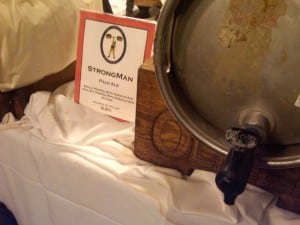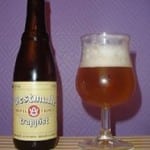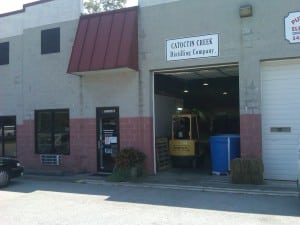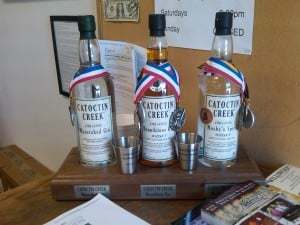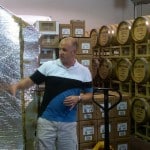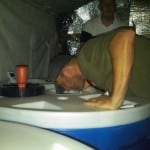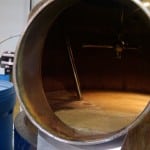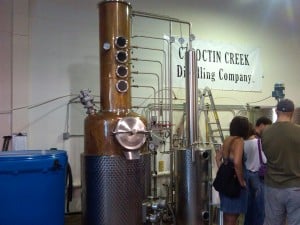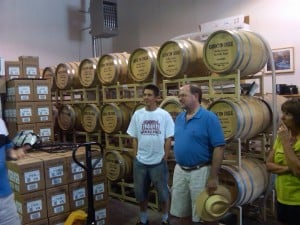Archive for August, 2011
Get Real..Ale That Is!
So what is “Real Ale” and what is a Real Ale Festival?
Please Note: I went to the Chesapeake Real Ale Fest 2011 which you can read about below, but I also want to mention that I’m planning a DC Based Real Ale Fest some time in late 2011. My next local Real Ale Festival is in Bel Air, MD, in early September – you can purchase tickets at: Real Ale Festival
My Quest for “Real Ale”?
This was my mission on Saturday, May 14th, 2011 as I visited the Chesapeake Real Ale Fest 2011 at the Pratt Street Ale House in Baltimore, MD. To make things even more interesting, my Verizon DSL, phone and FAX were under repair for the 3rd day – seems that 3 visits from Verizon Repair Techs couldn’t resolve the problem – the concept that the phone line had actually been cut was confirmed by Tech 1, but seemed to baffle Tech 2..until he went up on the Poll and confirmed that..OK, back to Real Ale..
My curiosity with Real Ale has alot to do with my background in wine – in wine, the concept of “terroir” or the “placeness” of wine (some would call it “micro-climate”, but that’s over-simplified..) is an integral factor in the taste and composition of wine. Wine is alive and represents all the factors involved with grapes and wine-making – including yeast. Real Ale is very much about the yeast – keeping them alive and allowing them to flourish and remain alive and change the flavors in the beer. But first, let’s clear up a few terms and concepts..
What Is Real Ale?
From Wikipedia: Real ale is the name coined by the Campaign for Real Ale (CAMRA) in 1973 for a type of beer defined as “beer brewed from traditional ingredients, matured by secondary fermentation in the container from which it is dispensed, and served without the use of extraneous carbon dioxide“.
Real Ale = Cask Ale?
YES -Right from Wikipedia: Cask ale or cask-conditioned beer is the term for unfiltered and unpasteurised beer which is conditioned (including secondary fermentation) and served from a cask without additional nitrogen or carbon dioxide pressure. Cask ale may also be referred to as real ale, a term coined by the Campaign for Real Ale, often now extended to cover bottle-conditioned beer as well.
Is “Bottled-Conditioned” Beer the Same as Real Ale?
Yes – Bottled conditioned ale has living yeast that will generally consume and alter the aging compounds in a beer, making it evolve instead of degenerate with age. Thus, some bottled conditioned ales could be of over ten years of age, evolving in flavor during that time.
If My Ale Isn’t Real, Is it Fake? This is very similar to the argument about wines that having no terroir or character because they’ve been over-manipulated by man – I don’t believe that’s true, because a good brewer just like a good winemaker can take good ingredients and make them taste excellent. Making wine or beer is a talent that can be learned and is not wholly based on the raw ingredients – then again, if the grapes had a difficult growing season or the Hops are used incorrectly, that will have an outcome on the final product. The good news is that beer producers have choices on how their final product tastes – West Coast brewers LOVE hops, while other brewers ususally use hops more sparingly. And then there are breweries that use local hops, possibly even organic hops. The same goes with grains – brewers can choose many different grains like wheat and barley, and where they are produced. Ultimately, beer is more about the brewer’s style, while wine is a split between the quality of the grape harvest and the winemaker. Ultimately, the consume must decide.
Me? Well, I drink Real Ales when possible because I like the often sour notes or unusual flavor conditions of the beer for a truly unique drinking experience! Do I think Real Ale will someday surpass those of regular beers? No – and why should they – to enjoy something unique, special and unusual is all about the personal experience, and no one wants those to be copied..just like individuality, craft beer should be enjoyed simply for the experience occasionally, but most of the time it really just quenches my thirst – Cheers!
Charlie “I Drink on the Job” Adler
Cooking with Beer on TV
I’ve been on local TV five times since I wrote the book “I Drink on the Job” and it was mostly to give the book exposure – the title doesn’t suggest it, but really I wrote mostly about my experiences with wine and how much of what I learned was wrong or flawed. Now that I’m moving into the craft beer industry (I’m organizing DC’s Own Beer Festival – MAC Brew Fest on Saturday, Oct. 15th, 2011) I’ve decided to switch gears a bit. About one year ago I became seriously interested in the DC craft beer scene after reading Tammy Tuck’s article in Citypaper “Back to the Future: Inside D.C.’s First New Breweries in Decades”. Since then, I’ve lined up all the local breweries that recently opened in DC (DC Brau, Chocolate City, Port City, and Lost Rhino) and I’ve spent quite a bit of time tasting, meeting and participating in the local DC beer Renaissance – it’s a train that’s just starting to move! So when I received a call from Lindsey Gustin of Fairfax, VA’s Channel 10’s Chef’s Recipes to cook on TV in August, 2011, I thought it was finally time to break into beer as part of a meal – in my case, that meant cooking with beer.
This was my 3rd time on this show and each time I had a different role – the first time was pretty wide open cooking, the 2nd time was “Composing a Cheese Tray” and on August 16th, 2011 it was “Cooking with Beer”. I’m including Youtube videos of the cooking on the show, but my goal was clear:
- 1)Show that craft beer is flavorful to cook with just like wine,
- 2)Use as many local craft beers in the region to cook beer-centric dishes while supporting MAC Brew Fest sponsoring breweries (and also one Food Sponsor – Dolci Gelati
- 3)Treat beer more like wine – something to be savored and enjoyed with meals
The first dish I demonstrated was Beef Carbonnade made with Stillwater Ales Stateside Saison. Carbonnade is a fancy Belgian name for essentially long slow braised beef in beer. Traditionally Belgian beer is used in the recipe, but many American brewers travel to Belgium and learn how to use their native yeasts and produce comparable styled beers. Stillwater Ales is a brewery run by friend Brian Strumke – he’s known as a “Gypsy Brewer” – in other words, he doesn’t have his own physical brewery, but because of his creativity with producing flavorful and innovative beer styles, many breweries throughout the world collaborate with him to produce artisanal beers that have real flavor and character. The combination of this dark flavorful malty beer with browned meat and slow cooked caramelized onions had the whole camera crew salivating during taping – here’s the video:
The next dish was a New Orlean’s favorite: BBQ Shrimp. BTW, there is NO BBQ Sauce in BBQ Shrimp, the name is misleading – essentially it means shrimp soaking in butter – two whole sticks for 1 pound of shrimp! In this case, I actually wanted a more neutral lighter style of craft beer and since I found Starr Hill Festie on sale at Whole Foods on P St., in DC, that was the perfect beer. Essentially, you brown onions add 2 sticks of unsalted butter, a little garlic, then spices, salt and pepper (I always adjust recipes with my own spices I mix together after purchasing from Penzey’s Spices) and finally some crab boil (again, I was more creative with some Miso and Asian Shrimp Paste combined), beef stock, lemon and of course beer. You pour this sauce over the shrimp in a casserole and broil for about 15 minutes..let sit, eat shrimp and soak up Italian bread with the butter goodness!
Finally, I’m normally too lazy to bake a dessert, so I went for an old favorite – a Beer Float. I learned about this after reading and trying a Guinness Stout with a scoop of vanilla ice cream – the contrast of rich malty beer and vanilla sweet ice cream is just ecstasy to the senses! I used in this case Alexandria, VA’s Port City Porter and one scoop of Dolci Gelati’s Creme Brulee – the combination of rich caramelly roasted malty beer and the cool gelato is such a delicious contrast, you have to try this!
It was a really enjoyable taping, and of course, I got a chance to talk about MAC Brew Fest and to treat craft beer as a gourmet product fitting for both cooking in recipes and serving with the final dish – see you all in DC on Saturday, October 15th, 2011 at MAC Brew Fest – Cheers!
Virginia IS Whiskey Country!
Enjoyed a fantastic tour of Catoctin Creek Distillery on Saturday, August 20th, 2011 when the DC Whiskey Drinkers (Facebook) had our private tour with Scott Harris and his team. Let me just say first, that for a City Slicker (I live in Georgetown) the area around Purcellville, VA is so relaxing and bucolic that I could feel all my tension fading away even before I came to the Distillery’s door. Catoctin Creek is located in an industrial park, but it’s a pretty quaint low-industrial area, and it’s pretty much smack in the middle of the woods! Also, I was relieved to find that my GPS took right to the front door, something that rarely happens this far out.
I didn’t realize it until I got there, but the Distillery is a pretty popular place on weekends, and the fact that we nabbed a private tour through the owner made a big difference – after our group of about 15 left, a mob of 50 or more thirsty whiskey lovers filled the tasting room and warehouse and we felt lucky to have had the privilege! Here’s a photo of the whiskey’s we tasted – note that there is already a plan to change the labels.
Catoctin Creek Distillery is currently producing 3 spirits – Mosby’s Spirits, Roundstone Rye and Watershed Gin – as well as Pearousia Pear Brandy. Mosby’s is an organic (actually, all of Catoctin Creek’s spirits are organic – this is why Scott is constantly forced to search for organic rye growers throughout the U.S.) unaged white spirit – but the rye definitely comes through with both a sweet and almost earthy best I can describe it as hot pepper and clay flavor that really awakens the senses – THIS is what Vodka only hopes to be! The Roundstone Rye is ages 4 month in new oak and is a mellower more rounded version of the Mosby, with just enough caramel/brown sugar from the oak to make this a great sipping whiskey. The Gin is botanical with more of a citrus, orange fruit component and less herby than many, which lends well to mixing with more fruit concentrated drinks to match. I didn’t try the Pearousia – oh well, there’s always another day..
Without going into too much detail about the process of making whiskey (Distilling 101 – another class, another day..) Scott takes the rye and turns it into a beer of sorts, also called the “Wort” – basically beer without hops and a Distiller’s Yeast vs Brewer’s Yeast fermented to approximately 10% alcohol before it’s put into the still and converted into spirit. The middle photo is the Wort in the still, the photo to the right of that is actually before that during the fermentation into beer. Some interesting side notes: Virginia doesn’t produce much organic rye grain, so Scott has to go elsewhere to get it (he wants to be truly local, but alas..)..while distilling the Wort, a percentage of the first distillation called the “heads” is unusable because it’s poisonous – the ratios Scott gave are 100 gallons of beer distill into 10 gallons of spirit of which about 1/2 gallon of that is lost as the undrinkable “heads”. Scott distills to about 170 Proof (85% alcohol) and cuts it to around 90 Proof. When he makes the brown rye aged spirit, he ages in new charred oak barrels for 4 months – 10 lbs. of spirit is absorbed by the wood and is lost (spirits are about 7 lbs. to a gallon, so he loses another 1 gallon and change – rather than throw out these barrels, he sells them to breweries (like DCBrau – DC’s first Brewery in almost 60 years!)
On the left is the Kothe Still – it’s sort of a combo pot and continuous still, and is one of the reasons that American Micro-Distilling is growing at such a rapid pace. Our group really enjoyed the tour – so much so, that one of our group purchased 2 cases..I’ll need to visit them soon! If you’re interested in tasting Catoctin Creek’s products, definitely take the weekend tour – but you can also find many of their spirits in stores throughout the Washington, D.C. region. Catoctin Creek is also the only distillery we have pouring with 34 breweries at MAC Brew Fest – DC’s Own Beer Festival on Saturday, October 15th, 2011 – if you’re planning to visit DC, check it out – Cheers!
